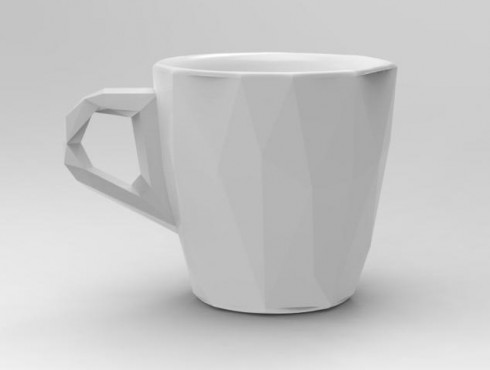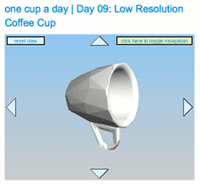The Guardian paints a fascinating, chaotic, and terrifyingly feasible, picture of the future of journalism.
(via The Dish).
Middle and High School … from a Montessori Point of View
The Guardian paints a fascinating, chaotic, and terrifyingly feasible, picture of the future of journalism.
(via The Dish).
It’s essential to give credit where it’s due, especially in academic papers, but it’s good practice anywhere, anytime, and with anything. Thus the MLA has come up with a standard format for citing Tweets.
Begin the entry in the works-cited list with the author’s real name and, in parentheses, user name, if both are known and they differ. If only the user name is known, give it alone.
Next provide the entire text of the tweet in quotation marks, without changing the capitalization. Conclude the entry with the date and time of the message and the medium of publication (Tweet). For example:
- Athar, Sohaib (ReallyVirtual). “Helicopter hovering above Abbottabad at 1AM (is a rare event).” 1 May 2011, 3:58 p.m. Tweet.
— Modern Language Association (MLA), 2012: How do I cite a tweet?
(via Madrigal, 2012: How Do You Cite a Tweet in an Academic Paper?)

There is a lot of potential for the new Nest thermostat to bring modern technology into some of the the essential but mundane devices that surround us. Its importance is not in the addition of new technology (which usually means new complexity), but in how that technology can actually make life easier, help save money, and reduce our impact on the environment by saving energy. Steven Levy has an excellent article in Wired about the project.
A key thing that students should note is the large range of expertise that went into creating this device: engineers, computer scientists, venture capitalists, and artistic designers to name a few. The ability to collaborate with diverse groups is an essential skill to master.
Just because of the large savings that can be gained, thermostats have been long overdue for an overhaul. Most buildings are heated by burning fossil fuels, like natural gas or coal, or with electricity that is produced by the burning of of fossil fuels. Similarly, cooling is also usually powered by electricity. Thus every savings in energy that results from this thermostat reduces the human impact on global warming. Because the energy savings means that you pay less for energy, saving the environment in this way means that you’re also saving money.
It’s good to see projects like this one come to fruition. We can only hope that they did a good job, that this is actually a good product, and that it is successful so similar projects will follow.
There’s not much of a difference between what’s being called repurposing as opposed to plagiarism, at least as far as I can tell. Andrew Sullivan excerpts from an essay to highlight Kenneth Goldsmith’s “Uncreative Writing” class where:
… students are penalized for showing any shred of originality and creativity. Instead they are rewarded for plagiarism, identity theft, repurposing papers, patchwriting, sampling, plundering, and stealing. Not surprisingly, they thrive. Suddenly what they’ve surreptitiously become expert at is brought out into the open and explored in a safe environment, reframed in terms of responsibility instead of recklessness. …
After a semester of my forcibly suppressing a student’s “creativity” by making her plagiarize and transcribe, she will tell me how disappointed she was because, in fact, what we had accomplished was not uncreative at all; by not being “creative,” she had produced the most creative body of work in her life. By taking an opposite approach to creativity—the most trite, overused, and ill-defined concept in a writer’s training—she had emerged renewed and rejuvenated, on fire and in love again with writing.
The essence of Goldsmith’s article, however, is that creativity, these days is more built upon the work of others than ever before. No longer does the picture of a lonely, isolated artist, creating truly original work, seem to fit. Creativity these days is much more often found (and rewarded) in people who are rearranging, reimagining, and repurposing the work of others. It’s the “unoriginal genius”.

Following up on Fully Printed‘s vision of a future with 3d printing, I came across Shapeways, a website that lets you upload 3d designs and “prints” them in your choice of objects. One user, Cunicode chose to make different cup design every day. I’m quite taken by their Low Resolution cup.
In the finished cup, you can clearly see the quadrilateral and triangular facets that make up the 3d design’s mesh. I like that.

So now I’m just waiting until something interesting occurs to me. Shapeways would be a great place for creating some unique manipulatives.
Iceland’s new draft of a constitution has been submitted to parliament. The drafters relied heavily on citizen comments using internet sites like Twitter and Facebook. Anyone who’s scrolled through the comments sections of just about any site open to the general public would probably worry that the ratio of good information to bad would be pretty small (a low signal-to-noise ratio). But,
“What I learned is that people can be trusted. We put all our things online and attempted to read, listen and understand and I think that made the biggest difference in our job and made our work so so so much better,” [Salvor Nordal, the head of the elected committee of citizens] said.
–Valdimarsdottir (2011): Icelanders hand in draft of world’s first ‘web’ constitution on phsorg.com
The final draft is here (the link uses Google Translate, so it’s not a perfect translation). It will be interesting to see what the parliament does with it now.
From the constitution:
12th Art. Rights of children
All children should be guaranteed the protection and care of their welfare demands.
What the child’s best interests shall always prevail when taking decisions on matters relating thereto.
Child should be guaranteed the right to express their views in all matters relating thereto shall take due account of the views of the child according to age and maturity.
–Article 12 of draft Icelandic Constitution via Google Translate.
Perhaps it’s cultural conditioning, or maybe it’s genetic a predisposition, but adolescent boys to seem to have more of a predilection for war games than their female peers. The games they like tend to be first-person-shooters, like Call of Duty, and, given the trends toward improved video game graphics and remote, kinetic military action, real and simulated life seem to be converging.
Recently however, the Stuxnet virus exposed a much less glamorous picture of the future of cyber warfare. Kim Zetter has an excellent, extensive article in Wired on the computer scientists and engineers who reverse engineered the virus to try to figure out who made it and what it did. Since the virus seems to have been aimed at damaging Iran’s nuclear enrichment plants their work brought them to the edge of the world of international espionage. And they still don’t really know who created this remarkably sophisticated virus, though they suspect the U.S. and Israel.
One of the most interesting take-home messages from Zetter’s article is the amazing degree of international collaboration it took to figure things out. The virus was discovered by someone in Belarus. Researchers from the anti-virus company Symantec’s offices in California, Tokyo and Paris worked together passing information from one office to the next to keep the project going 24 hours a day. They published their findings to share them, and when they ran into stumbling blocks they couldn’t solve they put out calls for help on the internet – and people responded, bringing in expertise from Germany and the Netherlands.
The virus’ secretive creators and the open, diverse collaborators who untangled the virus reflect two conflicting aspects of the future that computer technology and the internet are making possible. And this conflict is showing up more and more in different areas – take Wikileaks for example – so it will be very interesting to see where the future takes us. Of course, we are not simply flotsam on the tides of history. As citizens of the internet, we have been enabled. We have a certain power, and a concomitant responsibility, to shape what we have for the benefit of our fellow citizens and those that come after us.
The Story of Stuff is a pretty commonly used video that starts the conversation on resource use and consumerism. The video below, “Full Printed,” takes a look at the future and how technology, particularly 3-D printers, might reduce the environmental costs of the things we use.
FULL PRINTED from nueve ojos on Vimeo.
There are already some places for 3d printing.